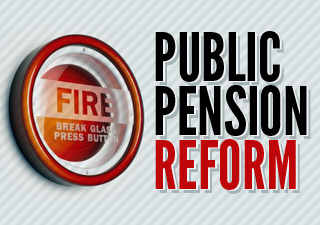Media

2014: A Year for Pension Reform
Pension reform promises to be on the forefront of the legislative agenda in the new year, and for good reason.
PSERS and SERS, the state’s two pension systems for public school and state employees, owe a combined $47 billion in unfunded liabilities. Not only have pension costs driven a downgrade on Pennsylvania’s bond rating, but they siphon taxes away from other budget priorities.
The consequences of doing nothing are significant: Within four years, state and school district pension contribution increases will cost taxpayers an additional $900 per household per year.
So, what’s the solution to the pension crisis?
According to the American Legislative Exchange Council’s “Keeping the Promise: State Solutions for Government Pension Reform,” the political nature of the current defined-benefit (DB) plans creates a “fiscal time bomb” as legislators increase benefits without the ability to make annual payments. Former Utah State Senator Dan Liljenquist outlines several legislative options and recommends switching to a defined-contribution plan (DC) to make future obligations affordable, predictable, and sustainable.
But some charge that transitioning to a DC plan will cost the state more money. Luckily, Twenty Myths about Public-Sector Pension Plans, compiled by Richard C. Dreyfuss, a Senior Fellow at the Manhattan Institute and the Commonwealth Foundation, provides some much-needed clarity.
He writes that the estimated transition costs fall well below the costs of continuing a DB plan—where unreliable contributions, benefit increases, and unrealistic returns promise to magnify the current crisis. Michigan provides a case study for successful reform. Dreyfuss estimates taxpayer savings of $2.2 to $4.2 billion since switching to a DC plan in 1997.
Now is the time to enact transformative pension reform, keeping in mind the lessons learned from other states. Doing nothing is simply not an option.